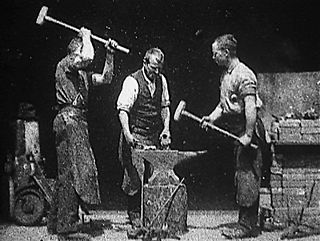
Blacksmith Scene is an 1893 American short black-and-white silent film directed by William K.L. Dickson, the Scottish-French inventor who, while under the employ of Thomas Edison, developed one of the first fully functional motion picture cameras. It is historically significant as the first Kinetoscope film shown in public exhibition on May 9, 1893, and is the earliest known example of actors performing a role in a film. It was also the first U.S. motion picture film ever copyrighted that same year. 102 years later, in 1995, Blacksmithing Scene was selected for preservation in the United States National Film Registry by the Library of Congress as being "culturally, historically, or aesthetically significant". It is the second-oldest film included in the Registry, after Newark Athlete (1891).
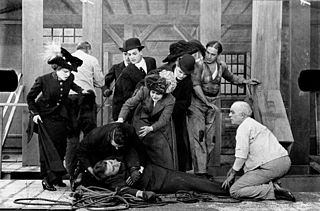
A Corner in Wheat is a 1909 American short silent film which tells of a greedy tycoon who tries to corner the world market in wheat, destroying the lives of the people who can no longer afford to buy bread. It was directed by D. W. Griffith and adapted by Griffith and Frank E. Woods from a novel and a short story by Frank Norris, titled The Pit and A Deal in Wheat.

Jam Session is a 1942 short film, directed by Josef Berne, which shows Duke Ellington and his orchestra performing "C Jam Blues".

The Land Beyond the Sunset is a 1912 short, silent drama film which tells the story of a young boy, oppressed by his grandmother, who goes on an outing in the country with a social welfare group. It stars Martin Fuller, Mrs. William Bechtel, Walter Edwin, and Bigelow Cooper. Produced by Edison Studios in collaboration with the Fresh Air Fund, the screenplay was written by Dorothy G. Shore and directed by Harold M. Shaw.
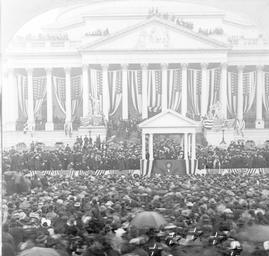
President McKinley Inauguration Footage is the name given to two different short documentary films which were combined as one. The two titles are President McKinley Taking the Oath and President McKinley and Escort Going to the Capitol. The two show President William McKinley arriving at the United States Capitol in order to take the oath of office of the president of the United States as part of his second inauguration on March 4, 1901.
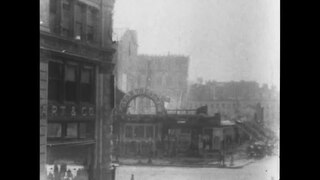
Star Theatre is a 1901 short documentary film in which time-lapse photography is used to show the dismantling and demolition of New York City's Star Theatre over a period of about a month.

The Kiss is an 1896 film, and was one of the first films ever shown commercially to the public. Around 18 seconds long, it depicts a re-enactment of the kiss between May Irwin and John Rice from the final scene of the stage musical The Widow Jones. The film was directed by William Heise for Thomas Edison. The film was produced in April 1896 at the Edison Studios of Edison, the first film studio in the United States. At the time, Edison was working at the Black Maria studios in West Orange, New Jersey.

Dickson Greeting is an 1891 American short silent film. Directed, produced by, and starring motion-picture pioneer William K. L. Dickson, it displays a 3-second clip of him passing a hat in front of himself, and reaching for it with his other hand. It was filmed on May 20, 1891 in the Photographic Building at Edison's Black Maria studio, West Orange, New Jersey, in collaboration with Thomas Edison using his kinetograph. The film was played for viewers at the National Federation of Women's Clubs, one of the first public presentations of a motion picture.

The Dickson Experimental Sound Film is a film made by William Dickson in late 1894 or early 1895. It is the first known film with live-recorded sound and appears to be the first motion picture made for the Kinetophone, the proto-sound-film system developed by Dickson and Thomas Edison. The film was produced at the "Black Maria", Edison's New Jersey film studio. There is no evidence that it was ever exhibited in its original format.
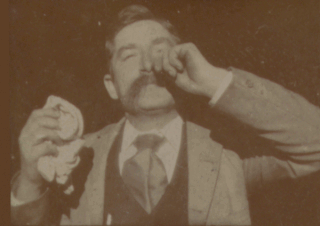
Fred Ott's Sneeze is an 1894 short, black-and-white silent film shot by William K.L. Dickson and featuring Fred Ott. According to the Library of Congress, it is the second oldest surviving U.S. motion picture to be copyrighted, although it is now in the public domain.

Life of an American Fireman is a short, silent film Edwin S. Porter made for the Edison Manufacturing Company. It was shot late in 1902 and distributed early in 1903. One of the earliest American narrative films, it depicts the rescue of a woman and child from a burning building. It bears notable similarities to the 1901 British short film Fire!, directed by James Williamson.

The National Recording Registry is a list of sound recordings that "are culturally, historically, or aesthetically significant, and inform or reflect life in the United States." The registry was established by the National Recording Preservation Act of 2000, which created the National Recording Preservation Board, whose members are appointed by the Librarian of Congress. The recordings preserved in the United States National Recording Registry form a registry of recordings selected yearly by the National Recording Preservation Board for preservation in the Library of Congress.

The National Film Registry (NFR) is the United States National Film Preservation Board's (NFPB) collection of films selected for preservation, each selected for its historical, cultural and aesthetic contributions since the NFPB's inception in 1988.
Glimpse of the Garden is a 1957 five-minute short experimental film made by Marie Menken, showing film clips of a garden, with birds chirping for the soundtrack. In 1958, the film won an award at the Exposition Universelle et Internationale at Brussels. In 2007, the film was included in the annual selection of 25 motion pictures added to the National Film Registry of the Library of Congress being deemed "culturally, historically, or aesthetically significant" and recommended for preservation.
Alfred Camille Abadie was an American photographer and pioneer filmmaker who worked for Thomas Edison. He specialized in actuality films, a predecessor to the standard form of documentary. In 2019, Abadie's Emigrants Landing at Ellis Island was included in the annual selection of 25 motion pictures added to the National Film Registry of the Library of Congress, being deemed "culturally, historically, or aesthetically significant" and recommended for preservation. The two minute film was the first to record a ferryboat docking at Ellis Island with dozens of passengers disembarking.
The Lead Shoes is a 1949 experimental film directed by Sidney Peterson at Workshop 20 at the San Francisco Art Institute. The film was made using distorting lenses. The film is a 17-minute black and white short.
The Revenge of Pancho Villa (1930–36)—Spanish title La Venganza de Pancho Villa—is a compilation film made by the Padilla family in El Paso, Texas, USA, from dozens of fact-based and fictional films about the celebrated Mexican revolutionary Pancho Villa (1878–1923).
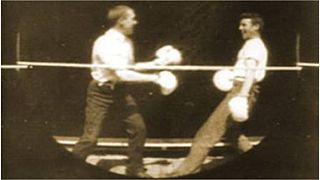
Men Boxing is an 1891 American short silent film, produced and directed by William K. L. Dickson and William Heise for the Edison Manufacturing Company, featuring two Edison employees with boxing gloves, pretending to spar in a boxing ring. The 12 feet of film was shot between May and June 1891 at the Edison Laboratory Photographic Building in West Orange, New Jersey, on the Edison-Dickson-Heise experimental horizontal-feed kinetograph camera and viewer, through a round aperture on 3/4 inch (19mm) wide film with a single edge row of sprocket perforations, as an experimental demonstration and was never publicly shown. A print has been preserved in the US Library of Congress film archive as part of the Gordon Hendricks collection.

Dream of a Rarebit Fiend is a 1906 silent trick film directed by Edwin S. Porter for Edison Manufacturing Company. It is a seven-minute live-action film adaptation of the comic strip Dream of the Rarebit Fiend by American cartoonist Winsor McCay. The film was marketed as using several special effects in which "some of the photographic 'stunts' have never been seen or attempted before."
John Henry and the Inky-Poo is a 1946 stop-motion animation film written and directed by George Pal using Pal's Puppetoons stop-motion style. The film is based on African American folk hero John Henry.















